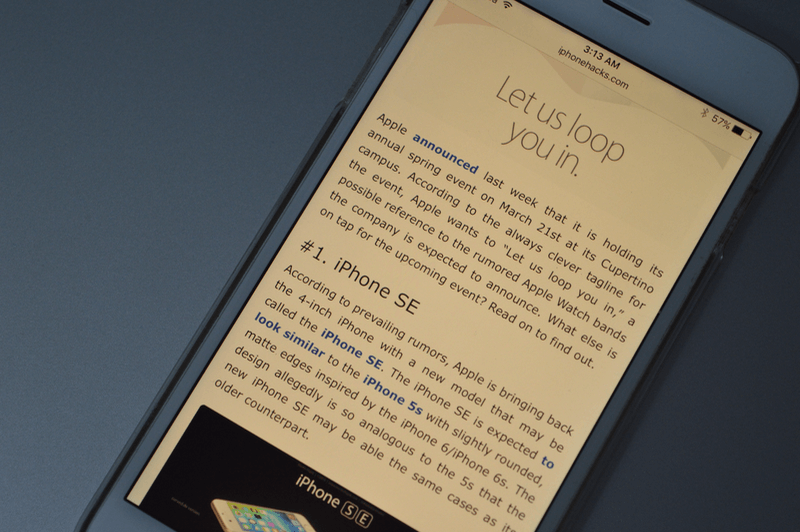
A new study conducted by Brigham Young University takes on Apple’s claim that Night Shift mode on iPhone helps users sleep better. The study not only goes against the claims but also says that the less bright light ‘tinkers’ with a user’s body clock.
Night Shift was introduced with iOS 9. The feature simply adds an orangish/yellow tint to your screen. Apple says that bright blue light is bad for our eyes, so the Night Shift mode adds an extra layer to the iPhone’s screen so that the eyes are exposed to less bright white light, and more warm yellow light.
Apple also says that the Night Shift mode may help users sleep better. But the study conducted by BYU says otherwise. A study conducted earlier by Manchester University says brightness is more important than colors when it comes to the body clock. It says that when the brightness is dim, “blue light is more relaxing than yellow.”
“The research showed blue colors produced weaker effects on the mouse body clock than equally bright yellow colors.”
Now, BYU university has conducted research to study the effects of blue light on sleep. In the first part of the study, researchers divided the research into three groups. These three groups contained users “who used their phone at night with the Night Shift function turned on, those who used their phone at night without Night Shift, and those who did not use a smartphone before bed at all.”
“In the whole sample, there were no differences across the three groups,” Jensen said. “Night Shift is not superior to using your phone without Night Shift or even using no phone at all.”
The study involved 167 adults between the ages of 18 to 24 who used a smartphone daily. The participants were asked to spend a minimum of eight hours in bed, during which they wore an accelerometer on their wrist to record their sleep activity. Moreover, they had an app installed on their smartphone that measured their usage, total sleep duration, sleep quality, wake after sleep onset, and the time it took them to fall asleep.
In the second part, the researchers split the sample into two groups – one consisting of participants who slept for about seven hours daily, and another that included those who slept less than six hours each night.
Obviously, the users who didn’t use the phone before going to bed and had seven hours of sleep slept better than those who used the phone and slept for seven hours. Users who slept for six hours, and used their phones, had no difference in sleep outcomes whether the participants used Night Shift or not.
“While there is a lot of evidence suggesting that blue light increases alertness and makes it more difficult to fall asleep, it is important to think about what portion of that stimulation is light emission versus other cognitive and psychological stimulations,” said Jensen.”
Do you use Night Shift on your iPhone? Do you think it helps you in any way? Let us know in the comments section below!
[Via Brigham Young University]